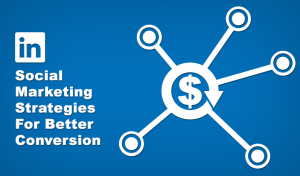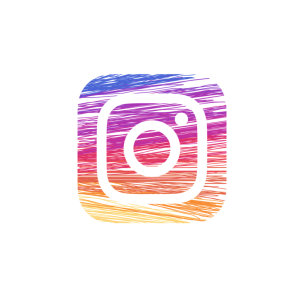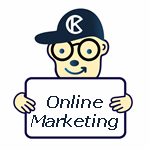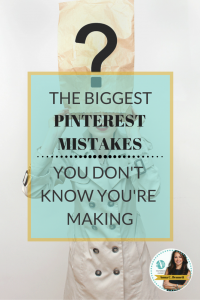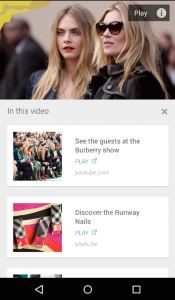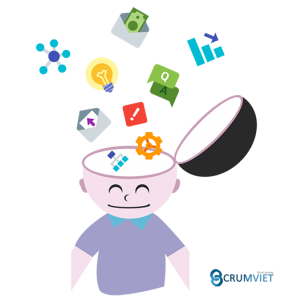If you’re in the process of starting your own business or updating your marketing strategy for 2020, you have undoubtedly been made aware of the importance of using social media to jump start your business’ growth.
General Social Media Terms
The first step to gaining an understanding of social media is learning the terms used to describe it. We will first go over several catch-all terms and then dive into the more specific definitions you will need to know for social media management on each popular platform.

The majority of content that a social media user sees is through their feed. Ensuring that your content will be seen in feeds is an important step to increasing social media engagement.
Followers: Users who have chosen to see content you post on the platform in their personal feed. Depending on the social media platform, users may or may not receive notifications when you post new content.
Handle: The name that users can search for on platforms to find your business’ profile or page. Handles are formatted differently depending on the platform.
Hashtag: A searchable tag used to categorize a post with similar content and make it easier for users to find the content they are looking for.
Like: An interaction where a user can click a button to show their support, agreement or approval of a post.
Private/Direct Message: A message that is sent directly to you from a user. Only you and the people who manage your business’ profile will be able to see and respond to it. It is often beneficial to respond quickly to messages or create a list of stock responses.
Profile/Page: The webpage customers will go to in order to see information about your company, find contact information and engage with you online. Depending on the platform, there can be a difference between setting up a profile and page.
Share: When a user enjoys a piece of content, they can re-post it to their own profile by using the Share feature. This is useful in social media management for businesses as it widens your audience without any extra work from you. There are a number of ways to boost the chances of your content being shared, one of which is to post at the optimal times of the day and week for your audience.
Story: Several social media platforms have introduced a Story function. This is a piece of content that is available to users for the 24 hours directly after it is published, after which, it will be removed. While the content is short-lived, this particular type of post has proven to be increasingly popular and an incredible marketing tool.
Tagging/Mentions: When you create a post that mentions a separate page, user or group, you can tag them in it and they will receive a notification. Each social media platform has its own etiquette and usage for tagging, so doing research before using this function can be helpful to ensure you are using it to its full potential.
Verification: A page or profile that has been verified by the social media platform to belong to a public figure, brand or organization, often indicated by a blue check mark near their handle. Verification can play an important part in growing a following online.

Analytics will help you plan your social media strategy and understand what’s working and what isn’t.
Views/Reach/Impressions/Engagement, etc., also known as Analytics: Various statistics that detail how often your content has been seen by users, how they have seen it and whether they have engaged with the content by liking, commenting or clicking any links included in the content.
Social Media Terms by Platform
Now that we have covered general social media management terms, we will dive into terms that are specific to each platform.
Facebook Event: A feature that allows users to create pages specifically for upcoming events. A business that creates an event will be able to invite followers, advertise the event to users that don’t follow the page, gather RSVPs, respond to questions and keep interested followers up to date with information regarding the event.
Friend: A user that has been added as a connection on a personal Facebook profile.
Group: A dedicated space for users to share content, discuss pertinent issues and engage with each other. It is often beneficial for a business to create a group for their brand to create a sense of community for your followers and provide extra value.

As of 2019, Facebook is the largest social media platform in the world, with over 2 billion monthly users.
News Feed: Facebook’s version of a feed.
Page: A page is created for businesses, public figures, brands and organizations to connect with their followers via social media. It requires a profile to create. A business page also features a community tab, which allows users to post content regarding the business for other users to view. However, a Facebook group has added functionality that community tabs do not.
Profile: A personal profile page that each user will create with their own information, including name and email.
Bio: The short biography that is featured at the top of a profile.
Filter: An editing feature that can be used to change the appearance of photos by altering colors, brightness and other aspects.
Highlights: Stories that a user can choose to save to their profile, even after they initially disappear. They appear directly below the bio. Highlights can be useful to showcase products and categorize your social media content.
Location tagging: A specific kind of tag that can be used to identify the location that is described or otherwise related to a piece of social media content. It can be useful for businesses to increase engagement and the probability of a user finding your profile.

Besides providing a useful and convenient way to reach your followers and customers quickly, Twitter is also frequently used by businesses to facilitate customer service.
Tweet: A social media post on Twitter. Each tweet is limited to 280 characters and may contain photos, videos, text and URLs.
Retweet: Forwarding a tweet from another user to your own followers. Retweeting also allows you to write and attach your own comment about the initial tweet.
Twitter Polls: This function allows business to create a 24-hour multiple-choice question that its social media followers can weigh in. By doing so, a business can quickly receive feedback from their followers.
Pin: A post on Pinterest. Contains an image, link and description.
Board: A collection of pins with a similar theme. Pinterest boards are useful for businesses to categorize social media content and ensure users find what interests them quickly.
Repin: Similar to retweeting, repinning allows users to reshare content that was added by a different Pinterest user.
Connection: A user that has been connected with on a personal LinkedIn profile, similar to Friends on Facebook.
Endorsement: On LinkedIn, a user can endorse another user and recommend them based on specific skills listed on their profile.
Jobs: On LinkedIn, a business can advertise job openings on its page. This can be a great way for a business to fill openings and recruit talent.
Profile: A personal LinkedIn profile that has a similar appearance to a digital resume.
Page: A page is used on LinkedIn by employers, groups and organizations to connect with their social media followers. A page requires a personal LinkedIn profile to set up.
YouTube
Annotations: Clickable, customizable text or images that can be added to a video to send viewers to specific webpages.
Channel: A user or business’ profile on YouTube.
Community tab: The community tab offers a functionality similar to posting on other social media platforms, most specifically Facebook. When a business posts to their community tab, the update will show up in their subscribers’ subscriptions page. It allows businesses to interact more directly with their subscribers and can boost engagement.

YouTube is the largest, most popular video hosting platform in the world. For businesses, it offers an easy way to host video content and distribute it to customers.
Playlist: A collection of videos that are of similar content.
Subscriber: A user that has followed a channel on YouTube.
Views: The number of times a video has been watched.
The Next Steps For Your Social Media
The best way to learn, is to do, so the next step for any business owner looking to create a social media presence is to start setting up profiles and pages.
Once your business accounts have been created, it’s time to start thinking about what type of content you will want to post, how often you will want to post it and more.
Digital & Social Articles on Business 2 Community
(54)
Report Post
